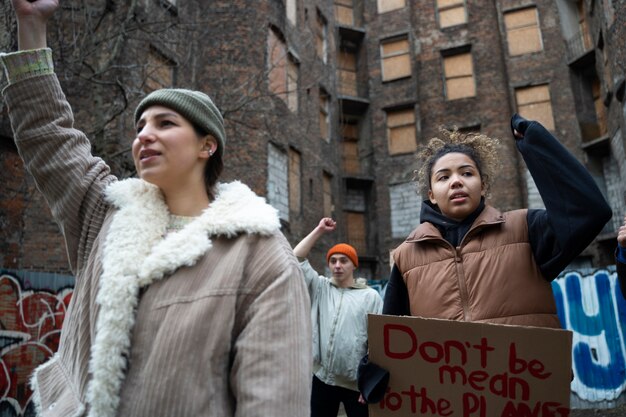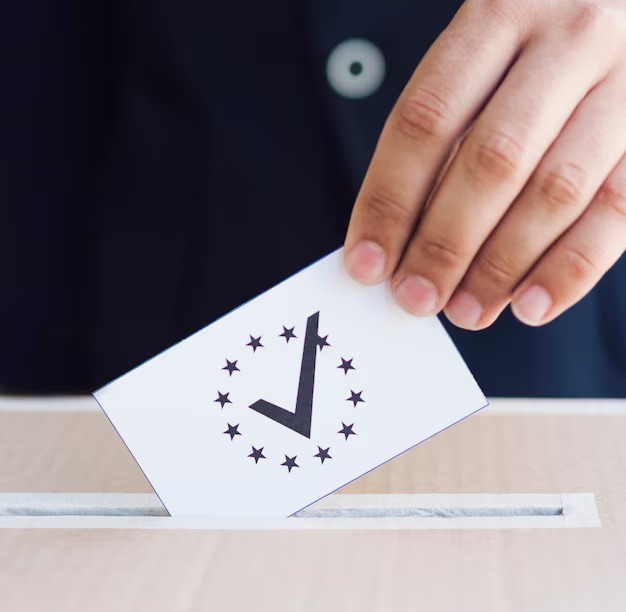
Highlights from the Sam Bankman-Fried Found Guilty Fraud Trial in FTX on November 2 2024
Highlights from the Sam Bankman-Fried Found Guilty Fraud Trial in FTX on November 2 2024
As significant legal events unfold, they often illuminate broader themes and critical lessons that resonate far beyond the specific cases at hand. Recently, a high-profile courtroom drama has captured public attention, revealing complexities that affect not only those directly involved but also the financial landscape at large. Such instances serve as a reminder of the intricacies of regulatory frameworks and the profound implications they carry for the future.
In dissecting the outcomes of these judicial events, one can identify a range of important conclusions that shed light on ethical considerations, investor relations, and the evolving dynamics of emerging markets. The courtroom has become a stage where pivotal arguments are made, exposing vulnerabilities and opportunities within the system. Consequently, stakeholders are urged to reflect upon these revelations to foster a more robust and transparent financial ecosystem.
By examining the nuances of recent testimonies and decisions, we can better appreciate the lessons that arise, encouraging informed discourse and proactive measures in the wake of such trials. A closer look at what transpired offers valuable insights into not only the ramifications for those directly involved but also the broader implications for regulatory practices and market behavior moving forward.
Overview of the Sam Bankman-Fried Trial
This section provides an encapsulated examination of a significant legal proceeding involving a prominent figure in cryptocurrency. The proceedings have attracted widespread attention due to their implications for the industry and the overall financial sector. Various facets of the case have raised crucial questions about ethics, compliance, and the responsibilities inherent to leading figures in emerging markets.
Background and Context
The events leading up to this judicial examination reveal a series of complex transactions and decisions that have been scrutinized intensively. The narrative comprises various stakeholders, including investors and regulatory bodies, whose interests have been directly affected. Understanding the broader implications will shed light on how regulatory frameworks might evolve in response to such high-profile cases.
Key Issues Explored
Throughout the proceedings, several pivotal issues have surfaced, illustrating the intricate relationship between innovation and regulation. A significant focus has been placed on alleged financial misconduct, which raises essential considerations about transparency and accountability in digital finance. The arguments presented have underscored the necessity for clearer guidelines to navigate this rapidly changing landscape, emphasizing that both industry leaders and participants must be vigilant in their practices.
Major Allegations Against Bankman-Fried
The recent legal proceedings have shed light on several significant accusations aimed at the former crypto mogul. These allegations encompass a range of actions that suggest unethical conduct and potential violations of financial regulations. The implications of these claims have considerable ramifications for both the individual and the broader cryptocurrency industry.
Fraudulent Practices
One of the central charges involves fraudulent practices, where the accused is alleged to have engaged in deceptive techniques to mislead investors and customers. This includes allegations of misusing client funds, which purportedly undermined the trust essential in financial dealings. The severity of these claims has prompted extensive scrutiny from various stakeholders within the financial sector.
Failure to Maintain Transparency
Another critical area of concern focuses on the alleged failure to maintain transparency regarding the operations and financial health of the company. Critics argue that a lack of clear communication about risks and financial losses has led to significant miscalculations among investors. This failure to provide candid assessments raises questions about corporate governance and accountability in the rapidly evolving financial landscape.
Key Witnesses and Their Testimonies
This section delves into the vital individuals whose accounts significantly impacted the proceedings. Their insights provided a deeper understanding of the events and intricacies surrounding the case, shedding light on various dimensions of the situation.
Critical Figures
- Former Colleagues: Ex-employees offered personal experiences, highlighting internal operations and decision-making processes within the organization.
- Financial Experts: Analysts provided assessments of financial practices, emphasizing the implications of certain transactions.
- Regulatory Representatives: Testimonies from officials illustrated the legal responsibilities and oversight mechanisms in place.
Notable Testimonies
- A former COO described the rapid expansion and the underlying pressure to succeed, which shaped many decisions.
- A key investor shared insights into the initial enthusiasm and subsequent concerns about the organization’s management style.
- A compliance officer detailed lapses in regulatory adherence, raising critical points about accountability.
Legal Strategies Employed by Defense
Throughout the proceedings, the defense team implemented a variety of tactics aimed at undermining the prosecution’s narrative. By focusing on specific legal principles and emphasizing critical aspects of the evidence presented, the attorneys sought to create reasonable doubts regarding the claims made against their client.
Challenging Evidence Presentation
One of the primary strategies involved scrutinizing the legitimacy and reliability of the evidence used by the prosecution. The defense argued that certain documents were misinterpreted or lacked proper context, suggesting that the jury should consider alternative explanations for the actions in question. This approach aimed to disconnect the alleged misconduct from intentional wrongdoing.
Character Witnesses and Contextual Background
Furthermore, the legal team called upon character witnesses to paint a more favorable image of their client. By presenting testimonials from colleagues and associates, they aimed to showcase a history of ethical conduct and commitment to transparency. This strategy was critical in providing the jury with a broader understanding of the individual beyond the allegations.
Ultimately, these techniques were designed to shift the focus away from the accusations and highlight the complexities of the case, reinforcing the notion that the defendant’s actions could be interpreted in a less nefarious light.
Implications for Cryptocurrency Regulations
The recent courtroom proceedings have ignited significant discussions surrounding the future of digital currency oversight. As the spotlight shifts to the broader sector, stakeholders are contemplating how regulatory frameworks might evolve to address emerging challenges and protect consumers effectively. The outcomes of this case are likely to serve as a catalyst for change in the rapidly advancing world of cryptocurrency.
Impact on Future Legislation
Legislators are expected to reassess existing legal structures governing digital assets. With heightened scrutiny on market practices, there is a possibility for stricter compliance requirements aimed at fostering transparency and accountability. This could result in the implementation of more robust laws designed to safeguard investors and enhance the integrity of financial systems.
Global Regulatory Landscape
Furthermore, the trial has emphasized the need for international cooperation in regulating cryptocurrencies. As more jurisdictions grapple with the complexities of digital finance, a harmonized approach may emerge. This could lead to standardized guidelines and best practices, ensuring that innovations in the crypto space proceed within a regulated framework, ultimately benefiting the global economy.
Public Reaction and Media Coverage
The proceedings surrounding this high-profile case have sparked a significant response from audiences worldwide, capturing the attention of both avid followers of finance and casual observers alike. As the drama unfolded, various channels and platforms disseminated information, fostering widespread discussion and debate.
- Social Media Buzz: Platforms like Twitter and Facebook became hotbeds for real-time commentary as users shared their opinions and insights.
- Traditional Media Analysis: News outlets dedicated extensive coverage, analyzing developments, and providing expert opinions on the implications of the case.
- Public Sentiment: Polls and surveys reflected a range of emotions, from outrage over alleged misconduct to calls for reform in financial regulations.
Commentators emphasized the importance of transparency in financial dealings, highlighting the case as a cautionary tale in the modern economic landscape. The interactivity of social media allowed for a quicker dissemination of information, enabling diverse perspectives to emerge and engage in meaningful conversations.
- Increased awareness of financial ethics.
- Promotion of accountability within the industry.
- Calls for stricter regulatory measures.
This notable attention showcases the public’s growing interest in ethical practices within finance and the broader implications of high-stakes legal battles on society at large.
Q&A: Sam bankman fried trial 2023 11 2
What charges did Caroline Ellison face in relation to the FTX collapse?
Caroline Ellison pleaded guilty to multiple counts of fraud and conspiracy related to the FTX collapse, specifically involving her role at Alameda Research.
How did the FTX founder Sam Bankman-Fried respond to the allegations against him?
Sam Bankman-Fried pleaded not guilty to the charges, including conspiracy to commit wire fraud, as he plans to vigorously fight the charges brought against him.
What was the role of Alameda Research in the FTX scandal?
Alameda Research, co-founded by Caroline Ellison, was involved in trading on the crypto exchange FTX and played a significant part in the financial mismanagement that led to the exchange’s collapse.
What was the outcome of the legal proceedings in the Southern District of New York regarding FTX?
In the Southern District of New York, Sam Bankman-Fried faced multiple counts of fraud, with allegations that he misappropriated billions of dollars from FTX customers.
Who is Judge Lewis Kaplan, and what is his involvement in the FTX case?
Judge Lewis Kaplan is overseeing the case against Sam Bankman-Fried in the Southern District of New York, where he will determine the legal ramifications of the charges related to FTX and Alameda Research.
What were the financial implications for FTX customers after the exchange collapsed?
After FTX collapsed, customers lost billions of dollars, leading to widespread financial distress among users who had invested in the crypto exchange.
How did players like Sam Bankman-Fried impact the cryptocurrency market?
Players like Sam Bankman-Fried significantly influenced the cryptocurrency market, and their actions, particularly those related to fraud and conspiracy, led to a loss of trust and stability within the sector.
What was Barbara Fried’s connection to Sam Bankman-Fried and the FTX situation?
Barbara Fried is Sam Bankman-Fried’s mother and has been mentioned in discussions regarding his background and influence within the context of the FTX collapse.
What steps did Caroline Ellison take following her guilty plea?
Following her guilty plea, Caroline Ellison has cooperated with authorities, providing information about Alameda Research’s operations and its connection to the fraudulent activities at FTX.
What does it mean for Sam Bankman-Fried to leave court after pleading not guilty?
When Sam Bankman-Fried leaves court after pleading not guilty, it signifies his intention to contest the charges against him, including conspiracy to commit wire fraud, as he prepares for his legal defense.
What were the main charges against former FTX CEO Sam Bankman-Fried in his trial?
Sam Bankman-Fried was found guilty on all seven counts of fraud and conspiracy related to the collapse of FTX and Alameda Research.
How did Sam Bankman-Fried respond to the allegations during his trial?
Bankman-Fried said that he believed he was acting in the best interest of FTX and its customers, despite the irregular financial dealings between FTX and Alameda.
What was the outcome of the second trial for Sam Bankman-Fried?
The second trial of former FTX founder Sam Bankman-Fried concluded with him being found guilty on multiple counts of fraud and conspiracy.
What impact did the collapse of FTX have on the cryptocurrency market?
The collapse of FTX created a significant crisis in the crypto market, leading to a loss of trust among investors and a downturn in the crypto industry.
What did Sam Bankman-Fried think about the management of FTX’s customer funds?
Sam Bankman-Fried thought that the management of FTX customer funds was secure, but evidence showed that he was aware of the misappropriation occurring at Alameda and FTX.
How long was Bankman-Fried sentenced to prison after being found guilty?
Bankman-Fried was sentenced to 25 years in prison for his role in the fraud and conspiracy that led to the downfall of the cryptocurrency exchange FTX.
What were some mistakes that Bankman-Fried made during his tenure at FTX?
Bankman-Fried made several mistakes, including failing to disclose irregular financial dealings between FTX and Alameda, which contributed to the company’s bankruptcy on November 11.
What role did jurors play in the trial of Bankman-Fried?
Jurors in Sam Bankman-Fried’s trial were tasked with evaluating evidence regarding wire fraud and conspiracy, ultimately leading to his conviction.
How did Bankman-Fried’s parents influence his career in the crypto industry?
Sam Bankman-Fried’s parents, both prominent figures, provided a supportive environment that may have contributed to his high-stakes risk-taking as a player in the crypto industry.
What did Bankman-Fried do after leaving the United States courthouse following his trial?
After leaving the United States courthouse in New York, Bankman-Fried was escorted by authorities as he faced the consequences of his actions related to FTX and Alameda Research.








